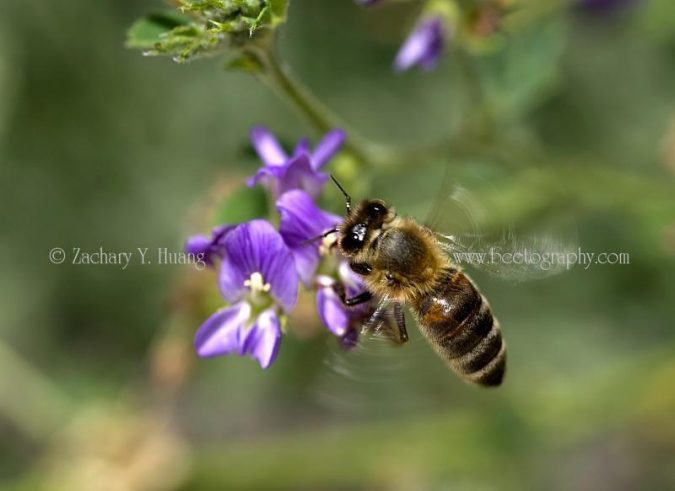| Family: | Fabaceae |
| Genus: | Medicago |
| Species: | M. sativa |
| Common names: | lucerne |
| ZBAS | 2 |
Alfalfa probably has enough nectar, only if honey bees liked the plant. Honey bees do not like working on the flower, because of the “tripping mechanism” — whereby the anther is loaded under pressure and when bees try to squeeze in to get nectar, a worker will get smacked on her head when the anther is tripped. This releases pollen to the bee, but bees become “angry” (do bees have emotion? perhaps so) after being hit like this. They therefore prefer not to work on the flower, if there is a choice. The leafcutter bee Megachille rodundata, does not mind being hit and they work fine with the plant. They are the best pollinator for this plant.
Nonetheless I did see bees foraging on this plant a few times. First time was at a MSU farm using my old point and shoot camera (#1, 2002). Then I was in Australia during a very short sabbatical (3 months!) and saw bees working on it again (#2 to 5 ). Finally (the rest of the photos and the video) I was shooting red clover recently (July 25 2020) and saw one bee working on a cluster of alfalfa flowers (she was very cooperative and I got a few shots).
1. Old photo from July 2002. You can see that the noise level was high. I bought my first dSLR (Nikon D70) March 2004. 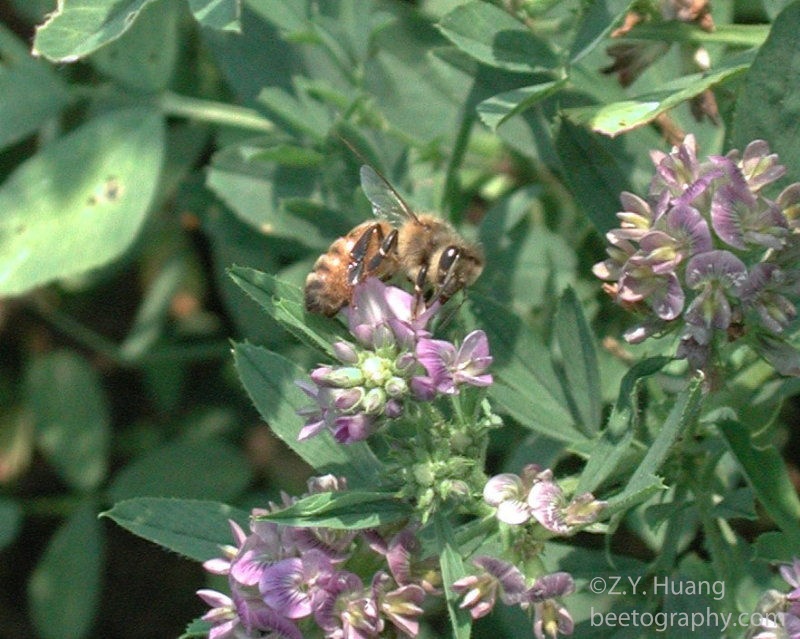
2. Photos from Canberra Australia Jan 20, 2009 — remember seasons are reversed there, so Jan is like our July here.
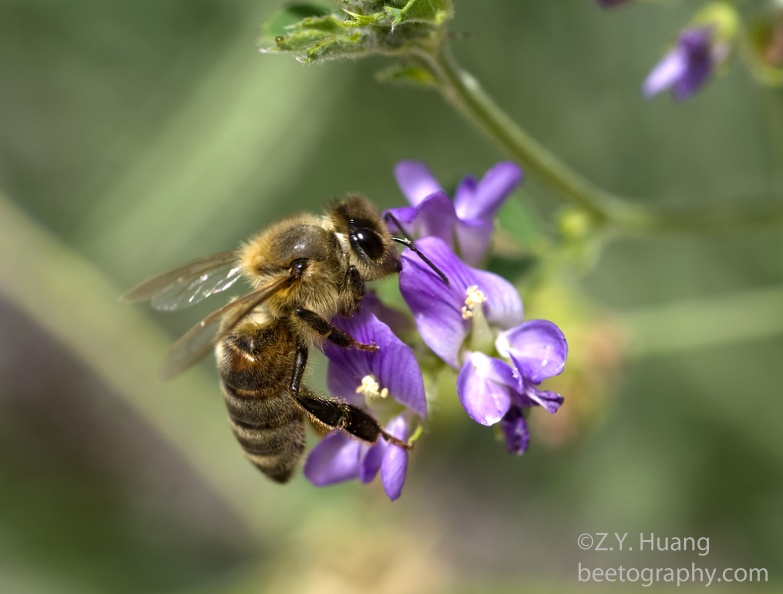
3. Looks like the same bee? Her wings are in the “windmill” effect mode. Nice!
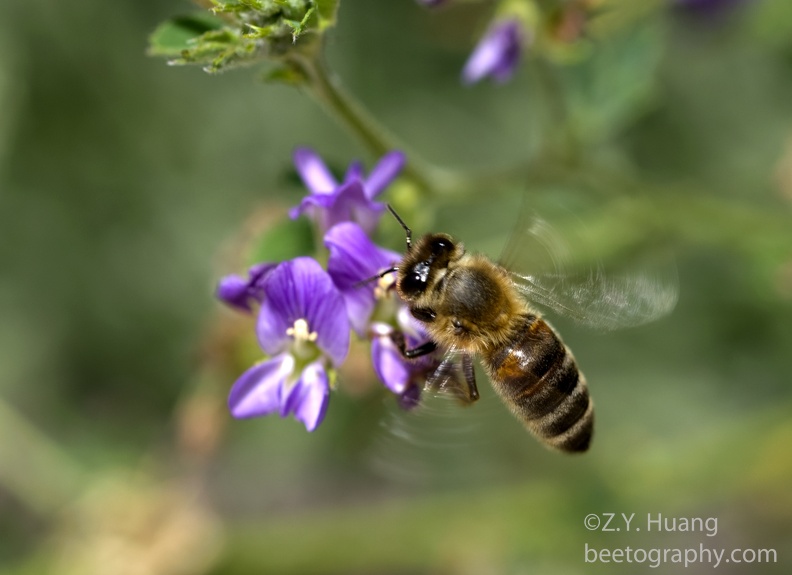
4. Now wings are frozen on the right side, totally gone on the left side. Ok looking but not as nice-looking.
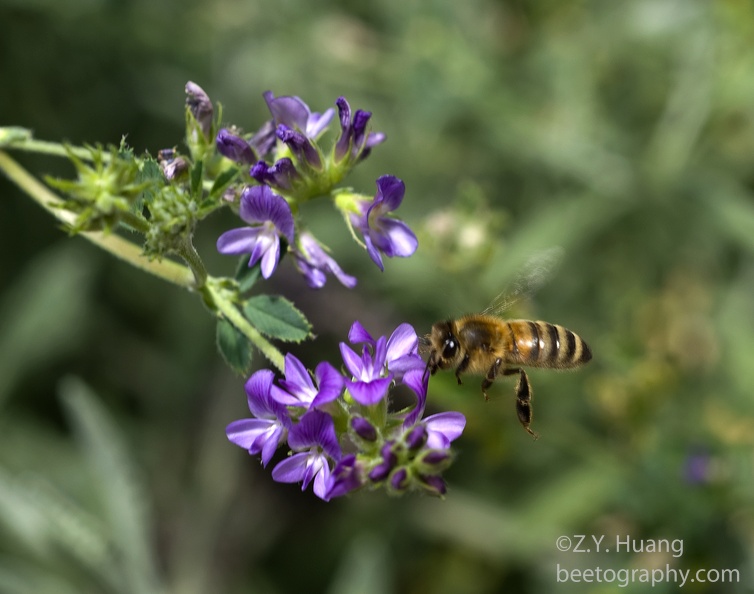
5. Good posture. Some bees learn to work with the flowers without tripping the anther and getting hit. But this does not result in receiving pollen from that floret. Thus probably does not result in pollination.
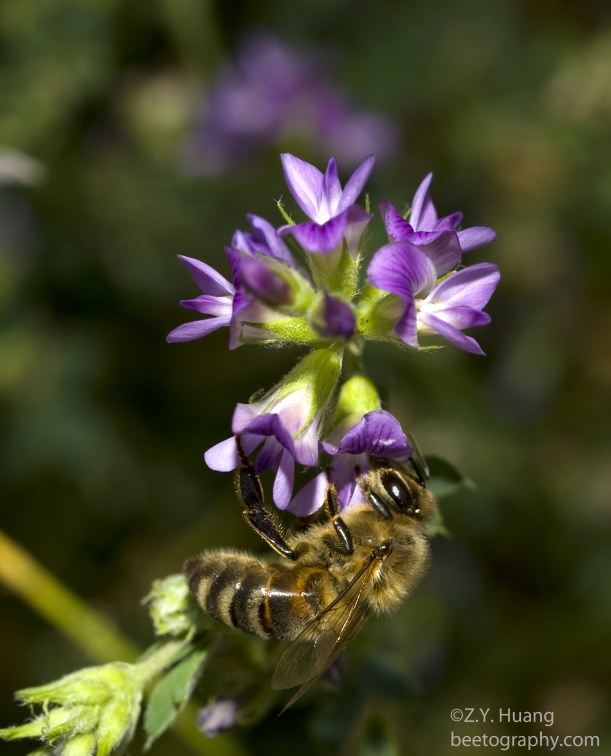
6. MSU farm, July 26, 2020. I was not able to get as close, so all photos are heavily cropped.
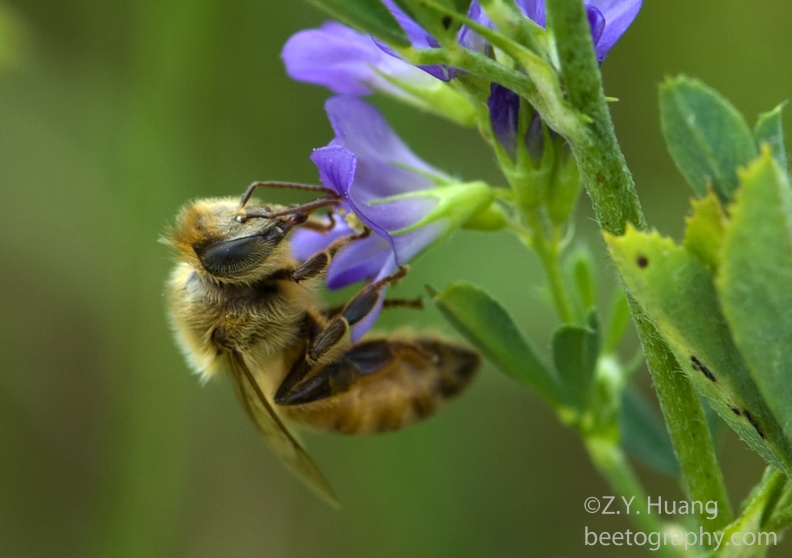
7. This bee looked so young (because of her abudent hairs!). But this is not a staged photo, so this might be her very first foraging trip?
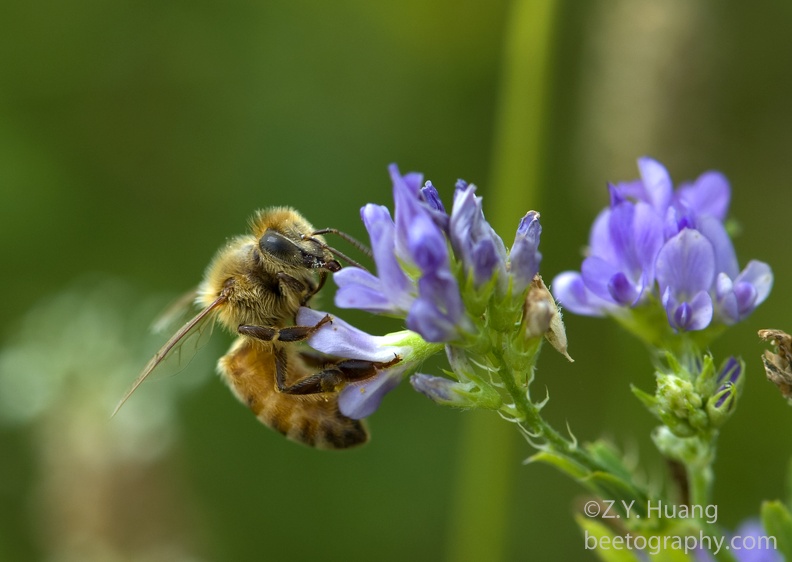
8. Another one with windmill effect…
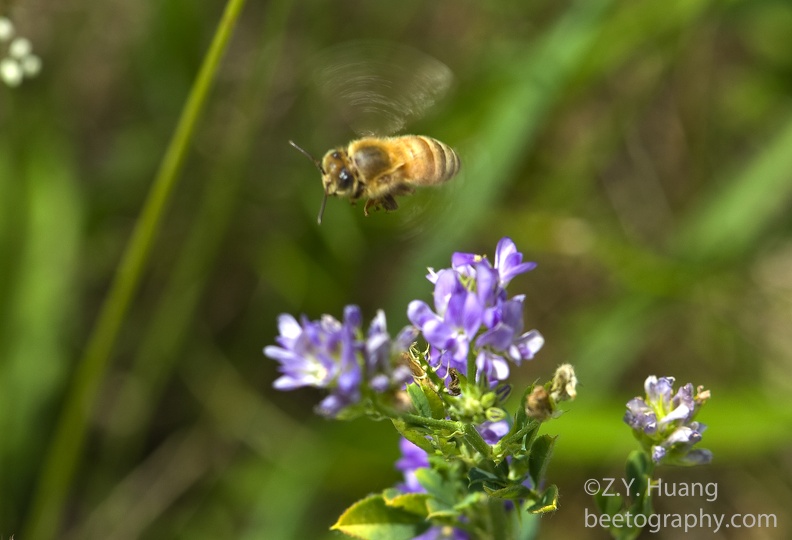
9. Windmill for the left wing, frozen for the right wing.
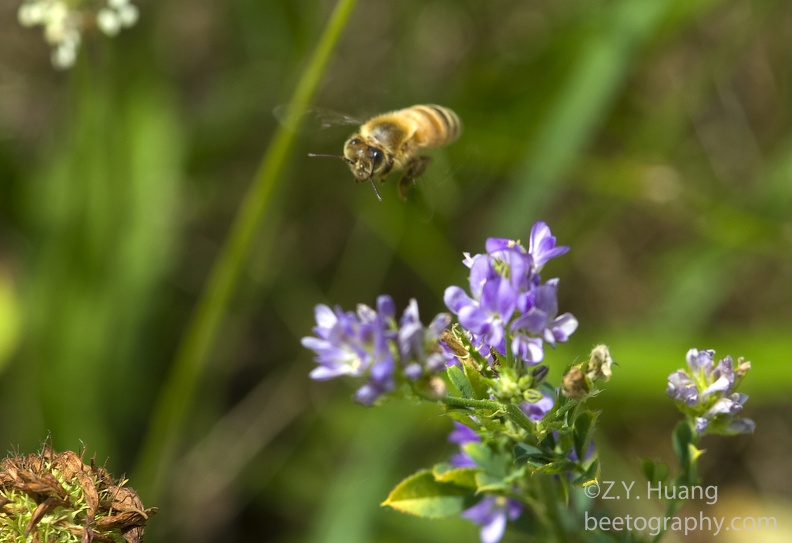
10. She might be getting nectar without tripping here also.
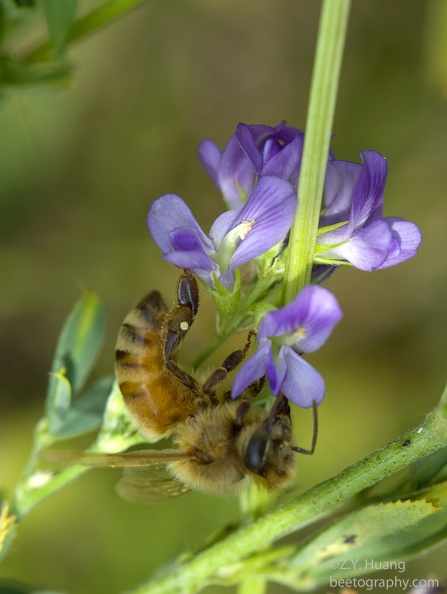
11. Video of an Apis mellifera on alfalfa. OK, my next project is to make a video on how tripping works.

